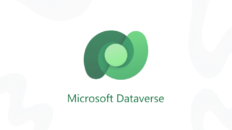This is a podcast by Hiran de Silva. Narrated by Bill.
In 2016, a new feature in Excel began to garner significant attention. This feature allows users to lock or unlock specific areas or ranges of a worksheet—something that has been the subject of countless tutorials and explainer videos. But as often happens with new features, it’s crucial to consider their full potential, especially in the context of real-world business applications.
One of the key features that many are searching for is how to protect specific areas of a spreadsheet from unauthorized viewing. The ability to hide or restrict access to certain data—whether it’s sensitive financial information, proprietary data, or simply a report that should only be viewed by certain people—is essential in a collaborative environment. At its core, this issue isn’t just about locking cells to prevent editing; it’s about managing access to data in a way that aligns with the user’s role and access rights.
However, there’s a catch: the new locking/unlocking feature does not inherently prevent users from viewing locked data. As of February 2025, this functionality is primarily about preventing editing, not viewing. While this is useful, it falls short in cases where you want to restrict visibility itself—especially in environments where multiple people are collaborating on the same file.
Common Workarounds: Novice Solutions
For those working in spreadsheets who need to hide data from view, a simple but not secure trick is to change the font color of certain cells to white. This hides the data, making it less obvious at first glance, but it’s far from a secure solution. Anyone who knows where to look can simply select the cell and see the contents in the formula bar. This is a cosmetic fix at best, not a real security measure.
Another common workaround is using cell formatting tricks like entering three semicolons (;;;). This formatting masks the contents of a cell by making the values invisible. While this can make data harder to see, it’s still not a true protection measure—again, users can easily uncover the hidden data by examining the formula bar. Additionally, applying this format means the cell won’t display any format at all, which can create other challenges in your worksheet design.
Both of these methods serve as basic, temporary solutions that don’t address the underlying need for secure, controlled data access. To really lock down data visibility, more advanced techniques are needed.
Dynamic Solutions: Using Code to Control Visibility
For more advanced users, VBA (Visual Basic for Applications) offers a way to dynamically control which ranges are visible or hidden on a sheet. By using code, a button can be created that toggles the visibility of certain areas. This method provides greater flexibility, as it allows for selective visibility based on user actions, but it still comes with limitations. The data remains on the sheet and is merely hidden from view, which doesn’t solve the issue of preventing unauthorized users from accessing the data in the first place.
Moving Beyond Traditional Excel: A Scalable, Secure Solution
As powerful as Excel is, it does have limitations when it comes to managing data access at scale. To address this, we need to step away from individual spreadsheets and consider a more sophisticated approach: a client-server architecture with a centralized data repository.
This approach, known as a Hub and Spoke model (or more technically, client-server architecture), separates the data from the spreadsheet. The data is stored centrally, and users access it based on their permissions. Here’s how it works:
- Centralized Data Storage: The data that users need to work with is stored in a central, secure location. The spreadsheet itself does not contain the data but retrieves it as needed through an authenticated connection.
- User Authentication and Authorization: Each user must authenticate themselves, typically with a username and password. Once authenticated, the system knows what data they are authorized to see and whether they can update it.
- Selective Data Retrieval: When a user opens the spreadsheet, the data is retrieved based on their access rights. A “Get” button pulls in the appropriate data, and only users who have the correct permissions can retrieve it.
- Data Updates: If the user is authorized to update the data, those changes can be made in the spreadsheet. However, those updates will not be written back to the central repository unless the user has permission, and only after they click a “Put” button to commit the changes.
This method not only ensures that the right people can see the right data, but also provides a scalable, secure, and flexible way of managing access to sensitive information in a collaborative environment.
A Global, Scalable Approach
The system I’ve described is a significant leap from the static lock/unlock feature currently being rolled out in Excel. By using a centralized data system and controlling access through authentication, you create a dynamic environment where both viewing and updating rights are carefully managed based on user roles. This allows for fine-grained control over who can see what data and who can make changes.
Furthermore, the system is scalable. An administrator can update permissions at any time, adjusting who can view or modify certain data as necessary. In practice, this could mean that different users see different views of a report or even interact with different data sets altogether. This level of flexibility and control would be impossible to achieve with traditional Excel features alone.
The Bigger Picture: Going Beyond the Swamp (Excel Hell)
It’s important to consider where this technology fits into the broader landscape of Excel’s capabilities. At the moment, Microsoft’s new feature is great for basic use cases where only a simple lock/unlock mechanism is needed to prevent editing. But as Excel continues to evolve, we need to think about how to integrate it into a more robust, enterprise-level workflow.
As I’ve discussed in previous articles, there’s a ceiling to what you can achieve with traditional, static Excel solutions. While popular techniques are heavily promoted in social media and tutorial videos, they often lead to what I call the “The Swamp”—a complex, hard-to-manage web of formulas, links, and unscalable solutions that quickly becomes unmanageable as business needs grow.
The solution, as I’ve outlined, is a more thoughtful approach to data management—one that scales and integrates with the larger business ecosystem. This method isn’t just about protecting data on an individual level; it’s about creating a collaborative, scalable system that allows for dynamic, secure, and controlled data flow.
Conclusion: The Future of Excel Data Protection
In conclusion, while Excel’s new locking and unlocking features offer some level of protection, they fall short when it comes to managing access to data in a collaborative environment. As businesses scale and data becomes more complex, it’s essential to move beyond static solutions and adopt a more dynamic, centralized approach.
By using a client-server architecture and managing user access through authentication, you can unlock the true potential of Excel, enabling secure, scalable data flow. This approach not only addresses the limitations of current Excel features but also positions you to create enterprise-level solutions that can transform how your organization works with data.
By taking this approach, businesses can achieve better control, scalability, and security—transforming their Excel workflows from static, isolated solutions into dynamic, global systems capable of meeting the demands of modern enterprises.
This method isn’t just about improving Excel; it’s about revolutionizing how we think about data management in the digital age, and, as I’ve shown, it can have significant financial and professional rewards for those who understand and implement it effectively.
This is where the value of Excel expertise truly shines, and with the right approach, you can elevate your worth and contribute to your organization’s success in ways that were previously thought unattainable.
This is a podcast by Hiran de Silva. Narrated by Bill.






Add comment